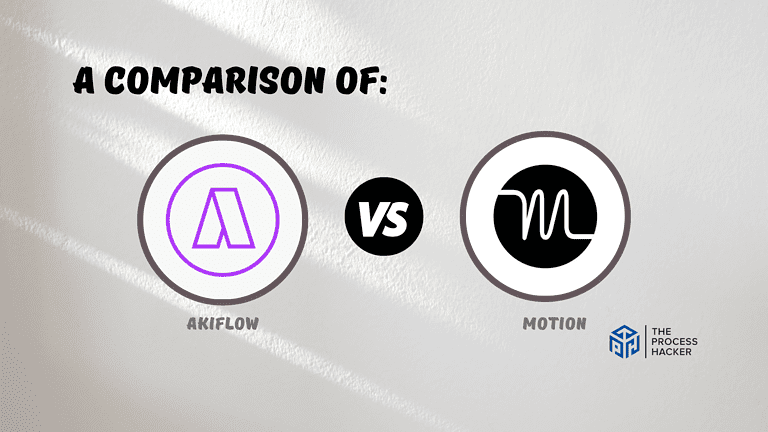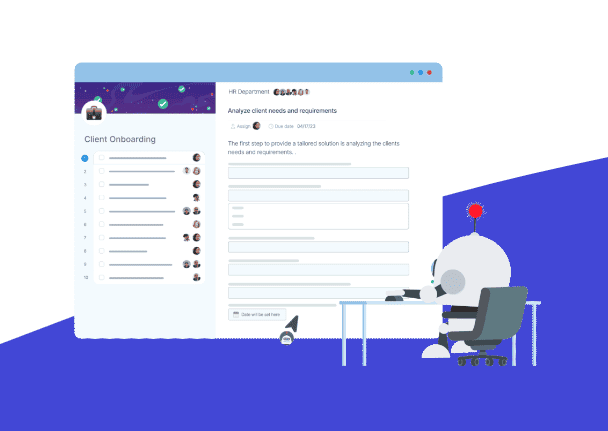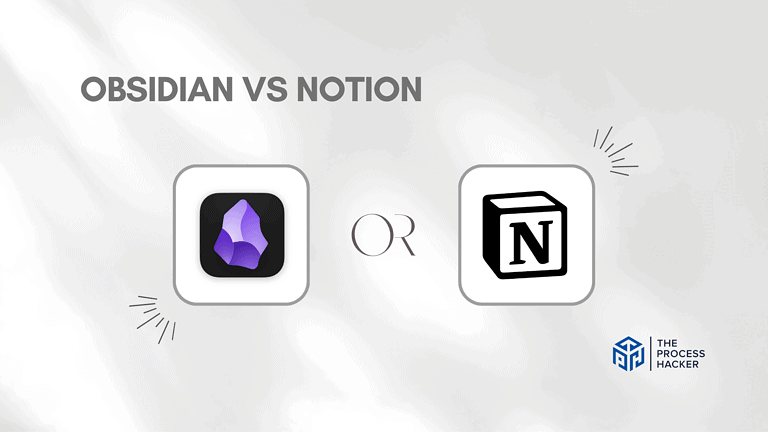How to Use Project Management in Education?
Are you tired of feeling overwhelmed and disorganized in school? Do you wish there was a way to manage your time and assignments better?
Look no further because I have an exciting framework for you! In this blog post, we will explore the concept of project management and how it can be applied to education.
Project management skills are useful not only in the business or professional world but can also greatly benefit students in their academic journey. So whether you’re a high school student struggling with multiple classes or a college student balancing coursework and extracurriculars, this article is for you.
Get ready to learn some valuable tips and tricks on using project management skills to excel in your education!
What is Project Management?
Project management in business involves organizing, project planning, and carrying out projects to meet certain organizational goals. When applied to education, these tasks could include implementing new technology in classes, preparing for big events like graduations, or introducing new lessons.
Simply put, project management helps ensure that project planning is completed quickly, correctly, and within the allocated funds. It involves breaking down larger tasks into smaller manageable ones, setting deadlines and milestones, assigning project management roles and responsibilities, and tracking progress.
What Do Project Managers Look Like in Educational Settings?
In an educational setting, a project manager coordinates a project’s different parts and ensures they all fit with the overall educational goals. This job might include talking to stakeholders, allocating resources, and keeping track of deadlines.
Through careful planning and organization, the project manager ensures that the different needs of the students, teachers, and administrative staff are met.
How Does Effective Project Management Benefit You in Education?
Some of the most important benefits of project management in education are the following:
- Enhanced Efficiency: Through structured planning and execution, schools can maximize resource use and reduce waste.
- Better Accountability: Everyone knows what they are supposed to do when roles and tasks are clear. This makes it easier to keep track of performance and progress.
- Better Use of Resources: Knowing the requirements and scope of a job helps make better use of time, money, and materials.
- More adaptability: good project management includes planning for what could go wrong, which helps schools be ready to deal with changes or problems that come up out of the blue.
How Do You Apply Project Management Skills in Education?
Project-based learning is a common way to teach where students gain knowledge and skills by working on difficult questions, problems, or tasks for a long time. Here are some project management rules that can help make sure that student projects are successful:
Planning and Goal Setting
Picture yourself as an educator: you have exciting ideas, whether it’s a new lesson series, a field trip, or a broader curriculum change. The key to translating those ideas into reality is solid planning and setting clear goals. Here’s how a project management approach makes this happen:
- Start with the big picture: What’s the ultimate outcome you want to achieve? Get specific!
- Break it down: Instead of one overwhelming task, create a series of smaller, more manageable steps.
- Set deadlines: When must you accomplish each step to meet your overall goal?
Additionally, it’s crucial to adapt your plans based on your class’s unique needs and pacing. This flexibility allows you to adjust timelines or instructional strategies to maximize learning outcomes.
In this way, project management isn’t just about sticking to an entire project plan but also about responding to the classroom dynamics and ensuring that all students can successfully reach their educational goals.
Resource Management
Just like project managers in any field, educators need to be resourceful! This means knowing how to identify, allocate, and manage the things you need to make your projects successful. This could include physical materials, funding, time, technology, or even the knowledge and skills of those around you.
How to Manage Resources as an Educator
| Aspect of Resource Management | What to Consider |
| Identifying Resources | What do you already have? What else do you need? Where can you find the additional resources? |
| Budgeting | How much will different resources cost? How will you secure funding? |
| Time Management | How much time is needed to complete each phase of your project? How will you fit the project into your existing schedule? |
| Delegating | What tasks can be assigned to students, colleagues, or volunteers? |
| Tracking and Monitoring | Are you using your resources effectively and staying within your budget? Do you need to make adjustments? |
Risk Management
Teaching students to anticipate potential risks and devise strategies to mitigate them prepares them for unpredictable scenarios, both in and out of academic settings.
Here are key questions to guide your risk management approach in educational projects and how to approach them:
- What could go wrong? Brainstorm a comprehensive list of potential issues, from minor setbacks to major disruptions.
- How likely is each risk to occur? Rate each risk as low, medium, or high probability.
- What would the impact be if a risk became a reality? Consider how it would affect your timeline, budget, student outcomes, or overall project success.
- How can you prevent or minimize each risk? Are there proactive steps you can take to reduce the likelihood or impact?
- What’s your contingency plan? If a risk does occur, what specific actions will you take to address it?
- Who is responsible for monitoring each risk? Assign individuals or multiple team members to track potential problems and implement contingency plans.
- When will you review and update your risk assessment? Schedule regular check-ins to adjust your plan as circumstances change.
Being Resourceful and Getting Expert Help
Students undertaking complex educational projects can greatly benefit from external expertise when applying project management principles to education. Papersowl, a professional essay writing service, provides a critical resource.
This platform employs top-rated writers who contribute not only by crafting high-quality papers but also by imparting essential project management techniques that students can apply to their complex projects. Accessing online help through an essay service at critical stages of a project can decisively improve the quality of a student’s work, ensuring adherence to academic standards and project timelines.
This integration of professional support helps students manage their academic projects more effectively, thereby boosting their productivity and educational outcomes.
How to Integrate Technology in Project Management Education?
Technology is an important part of modern schooling. Software made just for schools that manage projects can help teachers and managers better plan, carry out, and monitor projects.
Students and teachers can communicate and work together better using project management tools. These tools often offer places to talk, share files, and get feedback in real-time, all of which are necessary for flexible educational projects.
Here’s a list of tools that help deliver discussions, instructions, and information:
1) Google Workspace for Education
This suite of tools, previously known as G-Suite for Education, is designed specifically for classroom collaboration. It includes essential applications such as Google Docs, Sheets, and Slides, allowing students and teachers to share files and collaborate in real-time.
Google Drive facilitates easy file storage and sharing, while Google Classroom integrates these tools to streamline the management of assignments and feedback. This platform is particularly useful for schools that need a comprehensive set of collaborative tools that are easy to use and manage.
2) Microsoft Teams
Microsoft Teams is a robust platform that integrates seamlessly with the Microsoft Office suite, including Word, Excel, and PowerPoint. It offers features like chat, video calls, and organizing classes and assignments within the platform for all project team members.
Teams are ideal for educational institutions already using Microsoft products and looking for a solution that supports communication and collaboration within the same ecosystem.
3) Zoom
Known primarily for its video conferencing capabilities, Zoom has become an essential tool in education, especially for remote learning. It supports video calls, screen sharing, and breakout rooms, making it suitable for lectures, group discussions, and collaborative meetings.
Its ease of use and reliable performance make it a preferred choice for real-time communication in academic settings.
4) Canvas
Canvas is a learning management system (LMS) that integrates various educational tools into a single platform. It supports assignments, grading, and discussions and includes features for file sharing and collaborative workspaces.
Educational institutions favor Canvas for its comprehensive approach to course management and its ability to facilitate both teaching and learning in a cohesive environment.
5) Moodle
Moodle is an open-source LMS known for its flexibility and the wide range of plug-ins available. It supports online learning through features such as forums, databases, and wikis, which encourage collaborative work among students.
Moodle’s adaptability makes it a popular choice for institutions that require a customizable platform that can be tailored to specific educational needs.
6) Notion
Notion is an all-in-one workspace where users can write, plan, collaborate, and organize. It integrates notes, tasks, databases, and calendars into a single platform, making it an excellent AI project management tool for managing extensive notes, future projects, and collaborative tasks.
Notion’s flexibility and comprehensive features make it ideal for students and educators who require a versatile tool for individual and collaborative work.
Tracking and Evaluation
Using technology, teachers can monitor project progress and judge success based on set criteria. This constant evaluation helps improve project plans and results.
Here’s a concise overview of how technology aids in tracking and evaluating educational projects:
- Real-Time Monitoring and Feedback: Tools like Google Classroom and Trello allow teachers to track submissions and progress, offering immediate feedback to students, which can guide timely adjustments and improvements.
- Data-Driven Decisions: Learning management systems (LMS) such as Canvas and Blackboard provide analytics that help teachers understand student engagement and performance, allowing for targeted instructional changes.
- Collaborative Tools for Peer Review: Platforms like Microsoft Teams and Slack enable peer collaboration and feedback, fostering a supportive learning environment and encouraging peer-to-peer learning.
- Rubrics and Standardized Assessment: Educational technologies often include features to create and apply rubrics, helping standardize assessments and clarify expectations, which makes grading transparent and consistent.
- Adaptive Learning Technologies: Some LMS platforms adjust the difficulty of content based on individual student performance, ensuring personalized learning experiences that are challenging yet accessible.
- Portfolio and Progress Tracking: Digital portfolios, supported by platforms like Notion, help students and teachers track long-term progress and reflect on learning outcomes over time.
- Automated Testing and Quizzes: Automated assessments within LMS platforms provide quick insights into student understanding, offering immediate feedback and helping teachers identify areas that need further instruction.
These technological tools streamline the process of project tracking and evaluation, enhancing educational outcomes through structured support and comprehensive data analysis.
Challenges of Implementing Project Management in Education
There are clear benefits to applying project management skills in school, but it’s not always easy.
First, there is a lack of awareness and training among students and educators. Many students are not aware of project management techniques and their importance in academic work, which can lead to disorganized and inefficient project completion.
Additionally, there may be resistance from educators who are accustomed to traditional project management methodologies in a school setting and may not see the value in incorporating project management into their curriculum.
Another challenge is the limited resources available for students to access professional support. While essay services can provide valuable assistance, not all students have access to them or may not be able to afford them.
However, despite these challenges, it’s important for educators to recognize the benefits of project management and strive to incorporate it into their teaching and project management methods.
Final Thoughts on Project Management
Project management in education offers a structured approach to managing educational projects, enhancing learning outcomes, and preparing students for future challenges. By adopting project management principles, educational institutions can operate more efficiently and responsively, fostering an environment where administrative goals and educational strategies align seamlessly.
Embracing these practices, educators, and administrators can ensure that they are not just teaching students but also providing them with a framework for success in their academic and professional futures.







